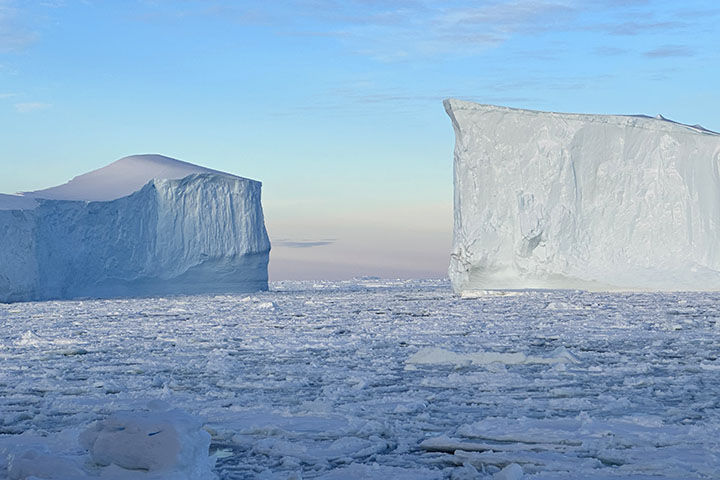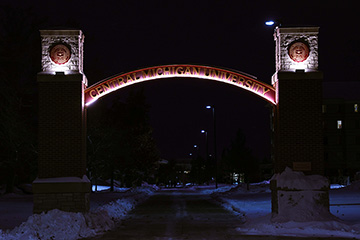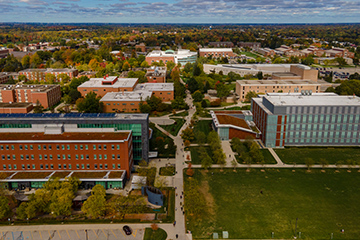Science takes students to Antarctica
Researchers investigate climate change's impact on biodiversity
This spring, Jessica Zehnpfennig’s doctoral research took her to East Antarctica, one of the planet’s remotest places. It is also one of the most beautiful, if you ask her.
“The sunrises were just phenomenal,” said Zehnpfennig, a Central Michigan University graduate student pursuing a doctorate in earth and ecosystem science.
Zehnpfennig was part of one of two CMU teams that embarked on an expedition to the Antarctic, starting March 4 in New Zealand and concluding May 5 in South Africa. The five-team expedition was led by Andrew Mahon, a CMU biology department faculty member and Zehnpfennig’s adviser.
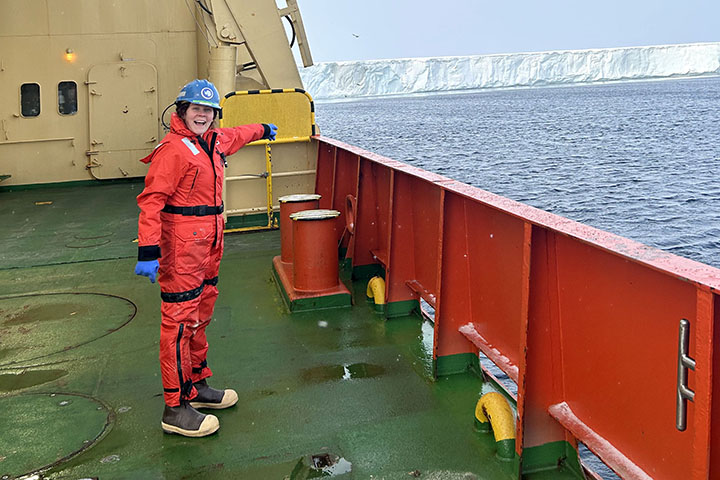
The expedition headed to a part of the Antarctic that is especially isolated, the east side, Mahon said. Most expeditions typically go to the region south of Cape Horn, the southernmost point of South America.
Mahon’s team partnered with researchers from another university to investigate climate change and what impact it is having on biodiversity.
They also hope to develop insights into how environmental factors influenced the region’s biodiversity on two sides of the continent. There is reason to believe that the two were connected by marine seaways when there was less ice, according to the research team’s abstract from the U.S. National Science Foundation. The NSF provided a $499,500 grant to finance the research.
For Mahon, this year’s expedition marked his eighth visit to Antarctica. His last trip with CMU students was in 2020. He said he’s spent a year of his life at sea conducting research there and wouldn’t mind spending more.
“I’d go back in a heartbeat,” he said.
The second team from CMU was led by Deric Learman, also a member of the biology faculty. His team received a $140,000 NSF grant to study microbes and their role in providing nutrients.
The first part of the trip was a 12-day crossing of open water from New Zealand to the area surrounding Antarctica, which posed some challenges due to rough seas, according to Zehnpfennig.
As the expedition continued, the seas calmed, revealing icebergs, whales, penguins and amazing sunrises.
“Alright, this was worth it,” Mahon recalled saying to himself.
Researchers in Mahon’s lab are interested in sea spiders, a little-known group of animals more closely related to horseshoe crabs than land-based spiders, Zehnpfennig said.
During this trip, researchers collected specimens by lowering trawls to the ocean floor, dragging them for a mile and examining the collected mud and critters.
Zehnpfennig said she’s studied sea spiders for three years but hadn’t seen one live until going to the Antarctic.
Seeing them in person was much better than just seeing them in the lab. Zehnpfennig said she was excited by some of the things she saw.
Among animals, they are one of a few kinds in which the male takes the lead role in carrying eggs until they hatch. One sea spider was carrying several egg clutches of different colors.
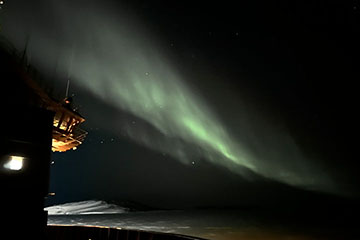
The teams worked in twelve-hour shifts, with Zehnpfennig taking the one that started at midnight. That gave her an opportunity to take in sunrises and to work under the Southern Lights, the southern hemisphere’s counterpart to the Northern Lights.
“The first time you see them and it’s…wow,” she said.
When they found sea spiders in the mud, they’d flash freeze them or put them in ethanol to preserve them for the trip back to Mount Pleasant.
The samples are expected to arrive sometime between late July and August. Then, both teams will begin to examine them.
“The big science is still ahead,” Learman said in an email.
Zehnpfennig said she hopes to answer questions about how closely related different sea spider species are to each other, and to learn more about how they reproduce. She hopes to wrap up her research by next May and graduate in December 2024.
